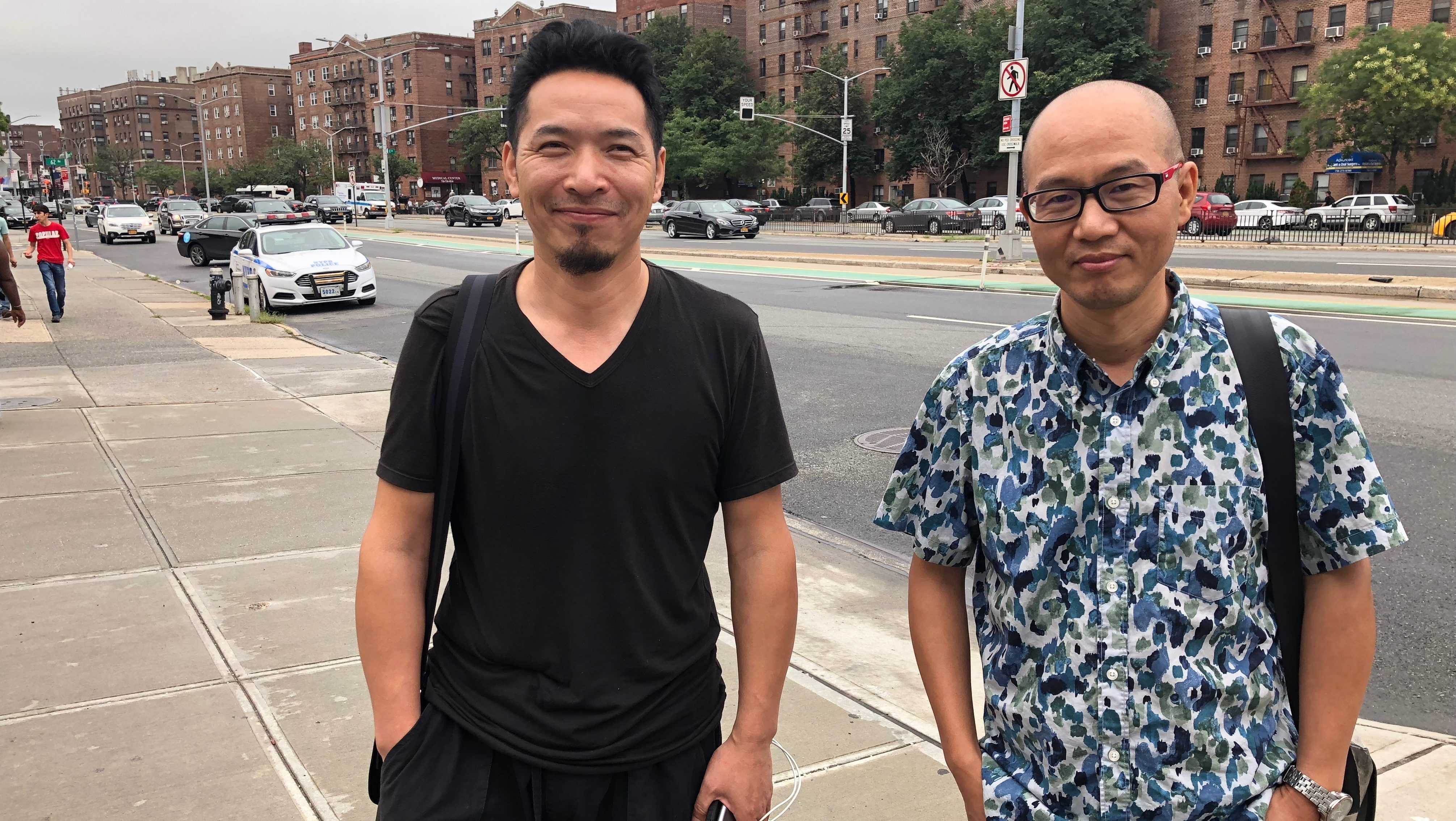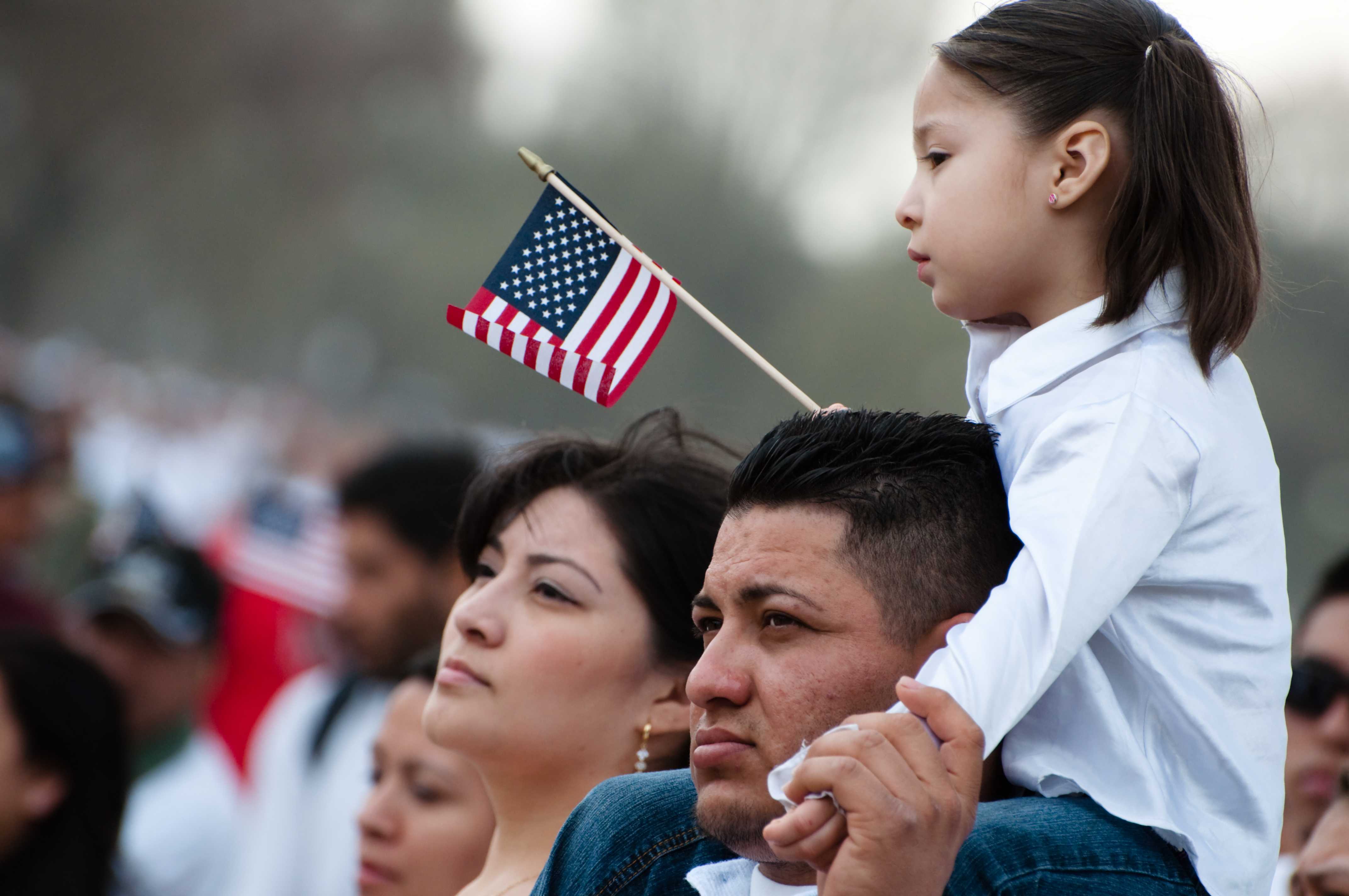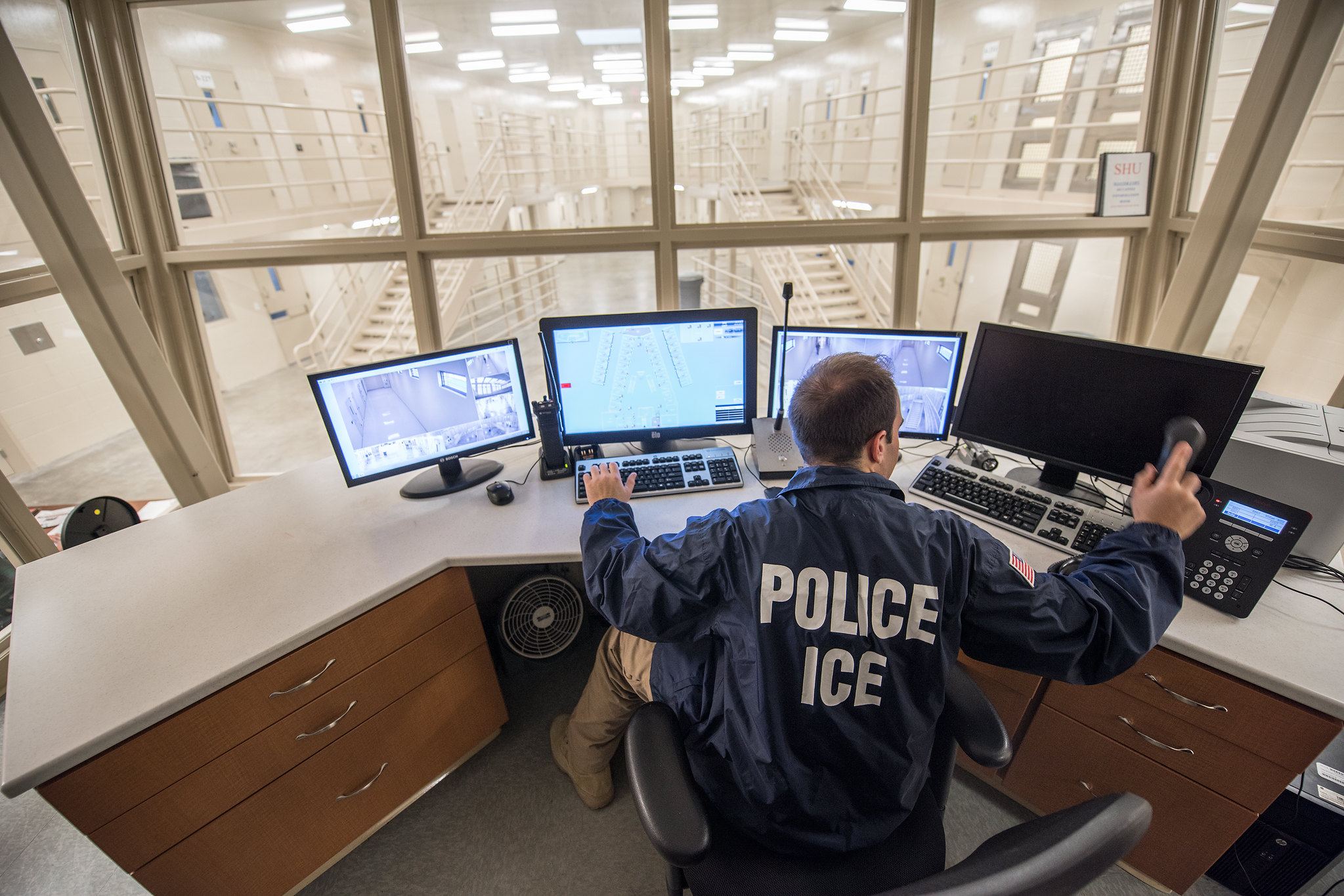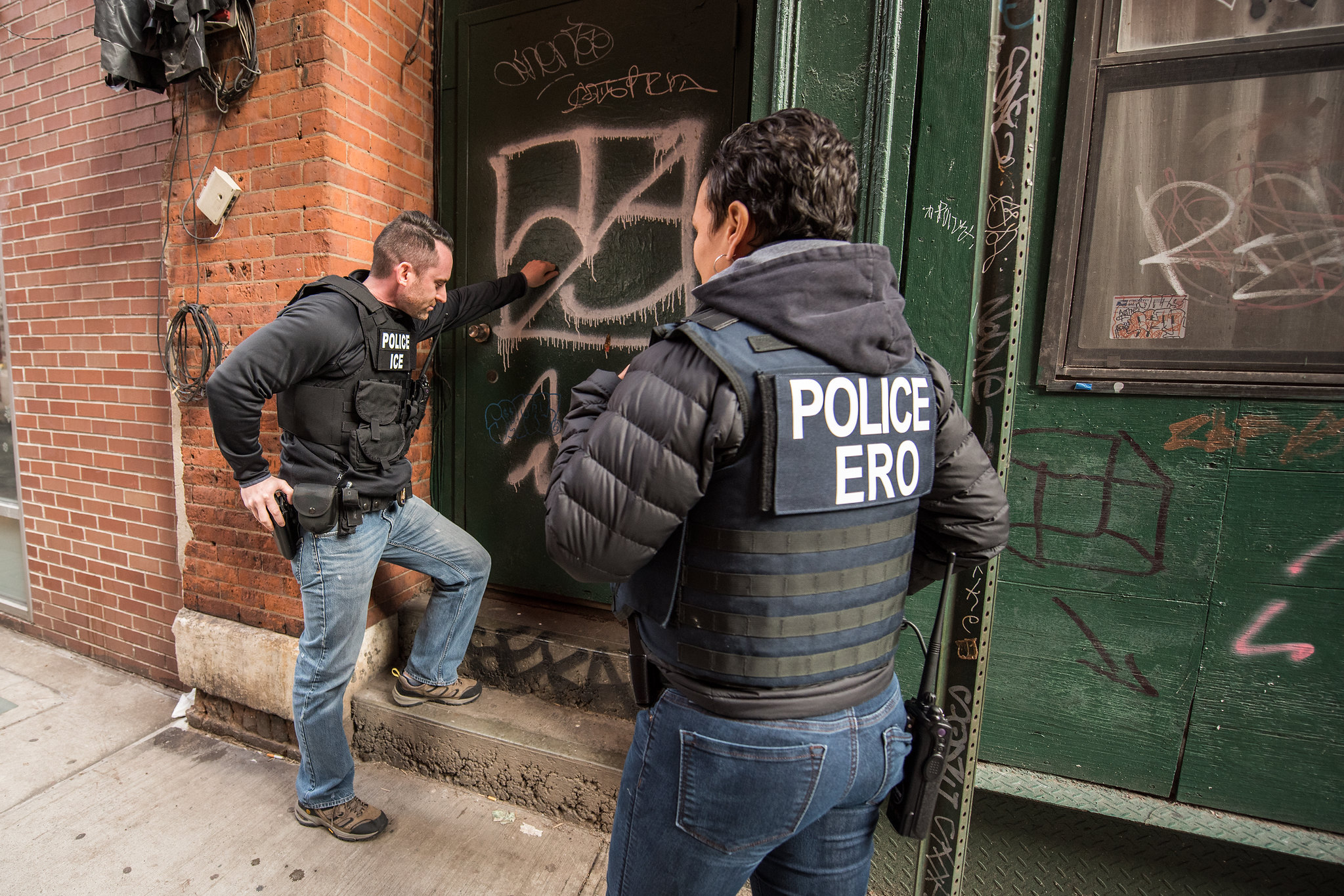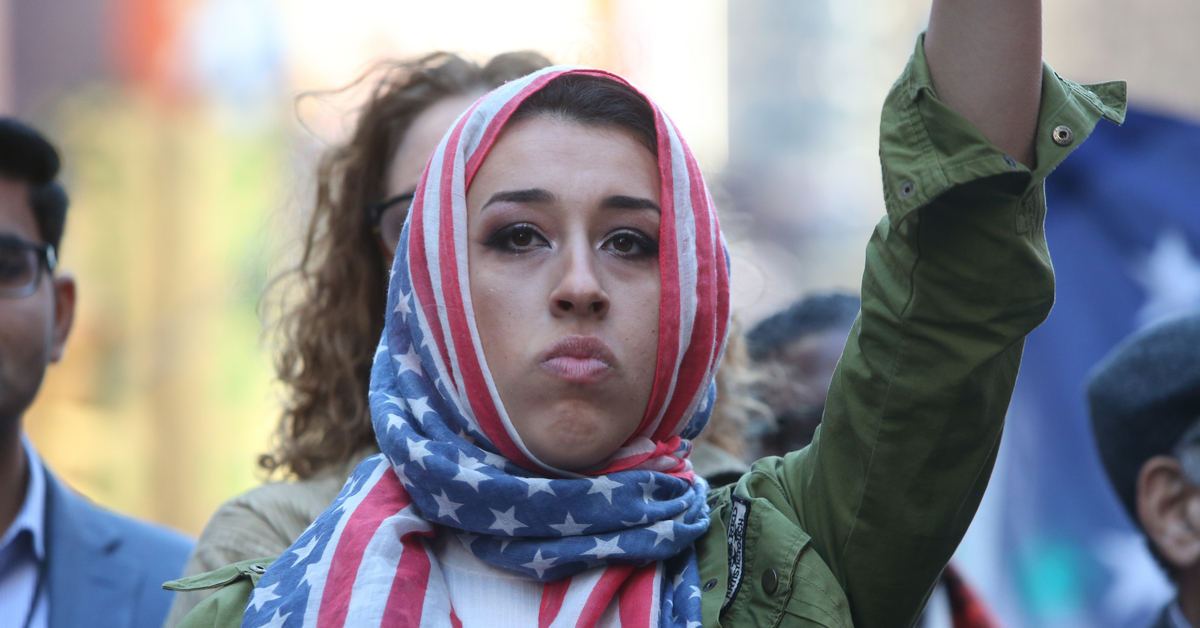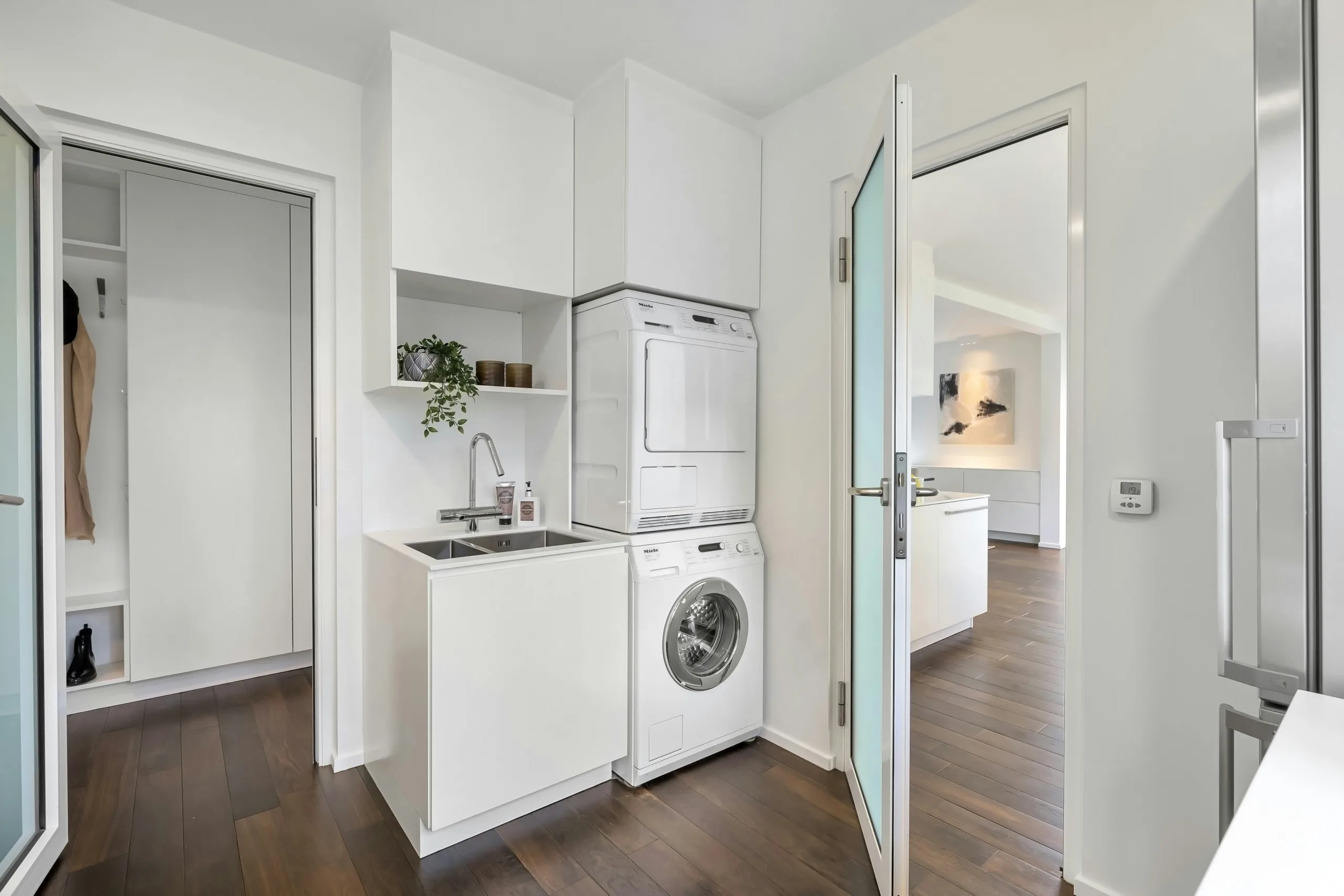Qiming Liu, a 46-year-old contemporary artist from China, says he moved to Middle Village, Queens last June with his wife and two children after obtaining an Extraordinary Ability green card. In China, the police had brought him in for questioning because of his art. Qiming’s work, he said in Mandarin through his friend and liaison, Jing Wang, “tells the truth about people in poverty and their lives.”
As have many other artists before him, however, Qiming is learning the hard way how difficult it is to make it in New York. Instead of using his training from the Sichuan Fine Arts Institute, Qiming is earning money selling home goods, mostly to customers in China, through the Chinese app WeChat.
His former classmate, 47-year-old multi-media artist Quian Ren, moved to Queens in January also with a talent-based green card. He’s similarly been unable to earn his living from art, traveling back and forth between the U.S. and China, where he teaches art to high school students. “Definitely I would love to stay here permanently but I have to travel back and forth to make money,” Ren told Documented.
“We come to New York because we believe in our artist dreams and we believe here we can develop our artist work to the next level,” Liu added. What’s missing is “some kind of artist organization or nonprofit where someone can give us more understanding about society.”
Wang, Liu and Ren’s translator and friend, moved to New York City from China 12 years ago to make documentary films. She uses WeChat to keep up with a network of roughly 30 immigrant Chinese artists, most of whom don’t speak fluent English. Wang wants to establish an immigrant artist collective that would give these artists a channel to show their works, but the project has proven too expensive so far. In the meantime, she’s helping them acclimate to the more mundane aspects of city life, like contesting parking tickets.
“Their only source is someone like me who has been here longer and knows English and has practiced art in NYC,” she says. “Even I don’t know who I can talk to to get help.”
Resources are limited
Coming from a country where art-making is closely surveilled by the government, seeking help from institutions can be a difficult adjustment. In China, explains Asian American Arts Alliance board member Leslie Kuo, it is par for the course for plainclothes police officers to attend show openings. As a gallery owner in Shanghai for six years, she had to submit paperwork to the local government detailing each of her artists and their work. Chinese artists new to New York “probably can’t even imagine what is out there [in order] to look for it,” she says.
And existing resources are limited. In conversations with Documented, artists, nonprofit organizations and museum staff acknowledged that while funding and gallery space does exist for recent immigrant artists in New York, and Chinese-American artists in particular, artists with English language skills have a much easier time.
Cecile Chong, a Chinese-American installation artist who came to the United States from Ecuador as a child, acknowledges that her success is indebted in part to connections she made while studying art in New York City. “I did my MFA at Parsons and I think after that a lot of opportunities came up for me,” she said. “I have my professors and classmates here, so it definitely helped.”
Immigrant artists should “try to learn the language as soon as possible,” she added.
Events for Chinese immigrant artists in their first language are rare in New York City. For example, one of the Asian American Arts Alliance’s hallmark recurring events is its Town Hall, where artists are invited to pitch their work before an audience of peers and funders. The alliance has only had one Town Hall for Mandarin speakers to date, in Flushing, and that was in the fall of 2014. Anjali Goyal, the director of the Alliance, says she’s one of only two staff people and bilingual events require involved planning.
Flushing Town Hall in Queens, a community arts space with a theater and small gallery, started its own Chinese Cultural Committee in 2012 to “advise on cultural outreach,” says Deputy Director Sami Abu Shumays. There’s also a dedicated Chinese outreach person on Shumays’s eleven-person staff, and he works with Chinese organizations to rent out the gallery for weeks at a time at nonprofit-friendly rates.
Still, “we’re only one little institution,” he says. “Despite the openness of folks in Queens to cultures from all over the world, the actual opportunities to perform or present work if you are an immigrant artist are very small.”
Government funding
Each year the Mayor’s Office of Immigrant Affairs participates in Immigrant Arts Week, which this year included an immigrant resources fair co-hosted by the Chinese American Planning Council. Last summer Mayor Bill de Blasio announced a 176-page “cultural plan” with a commitment to provide cultural grant information in more languages.
“The importance of the immigrant arts community to New York City cannot be understated,” said MOIA Commissioner Bitta Mostofi in a statement to Documented, going on to praise the work of famous artists in the city like I. M. Pei and Ai Wei Wei.
Nonprofits like the Lower Manhattan Cultural Council, which serves Chinese-speaking artists in Chinatown and the Lower East Side, have also gotten a funding boost in recent years from the city’s Department of Cultural Affairs. According to DCA spokesperson Ryan Max, the office’s funding earmarked for individual artists has more than tripled under Mayor de Blasio, to $2.93 million.
Since 2010, the LMCC has offered translation assistance to Chinese speakers applying to their grant program, and funding director Ana Fiore estimates they’ve served between 40 and 50 groups and individuals to date.
Yet, “To be completely honest we’ve had varying levels of success,” Fiore says. “We’ve certainly seen an increase in the number of groups that we’ve been able to support who are primarily Chinese-speaking, but it hasn’t always been a sustained level of support from year to year.”
Because LMCC relies on public funding, it favors projects with general audience appeal (the Cantonese opera is a popular example). Fiore acknowledges that this “can be challenging for individual visual artists.”
This year, the Museum of Chinese in America in Chinatown is preparing for a 2020 exhibition on Godzilla, an Asian-American artist collective founded in 1991. The museum itself grew out of the Basement Workshop, a collective of Asian-American artists, students and activists that formed in Chinatown in 1970. They “saw a lot of needs in the neighborhood from healthcare to documentation of history that weren’t being addressed,” says Herb Tam, the curator and director of exhibitions.
Today, the museum does its best to amplify the work of recent immigrant artists, says Tam, but it has been two years since the museum’s most recent workshop for Mandarin and Cantonese speakers.
“Artists may not know how to connect with us, what the process would be… whether you should just show up and talk to us,” he says. “That can be intimidating.”
“Especially if they were already educated in China or somewhere else, and didn’t come for grad school,” he adds. “They are moving here without any existing network, and at a certain age it becomes difficult to create one out of thin air.”
Correction: This article was updated on Sept. 26 to reflect the fact that the Department of Cultural Affairs tripled the earmarked funding for individual artists, not individual immigrant artists as the article previously stated.
